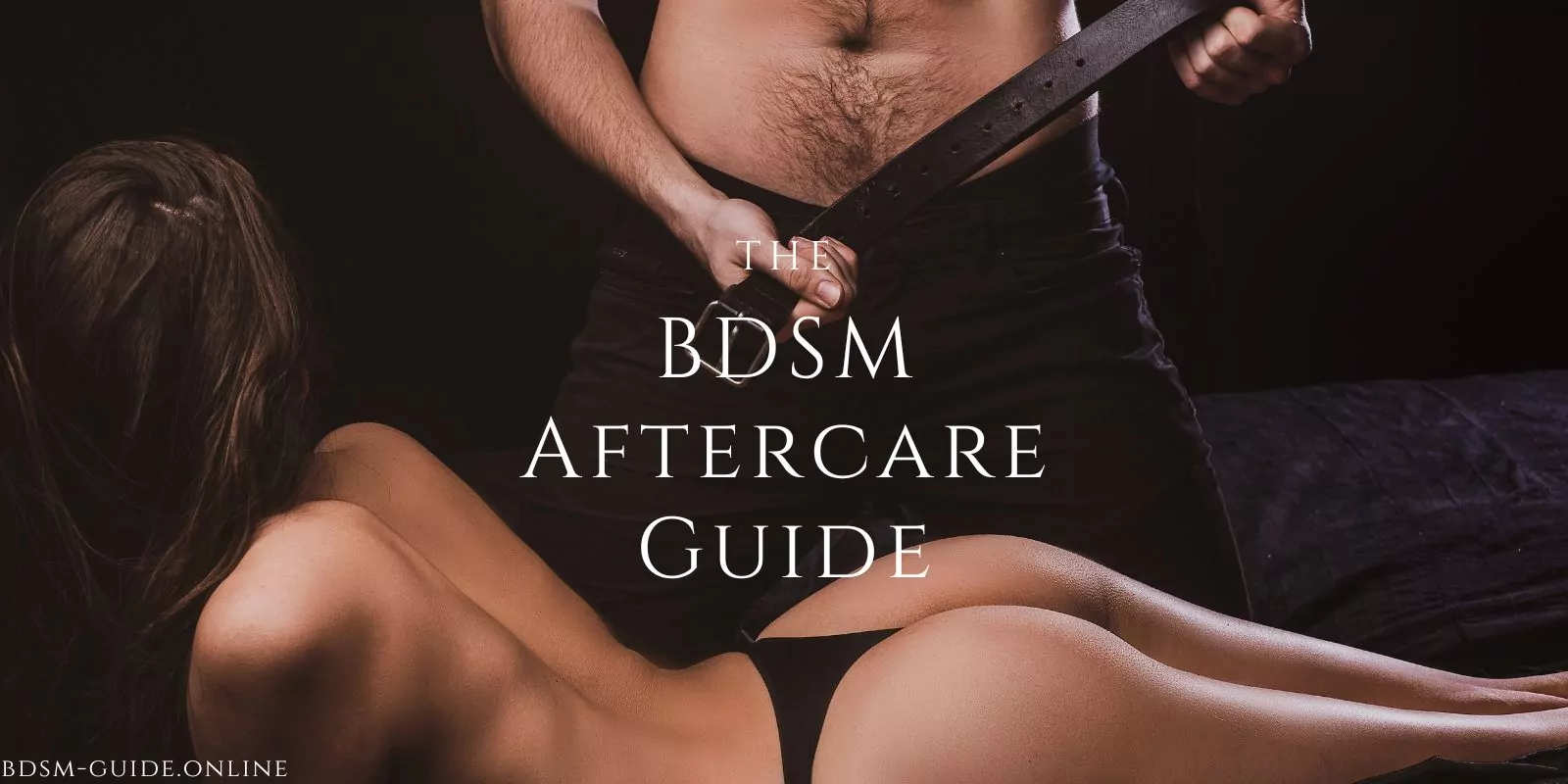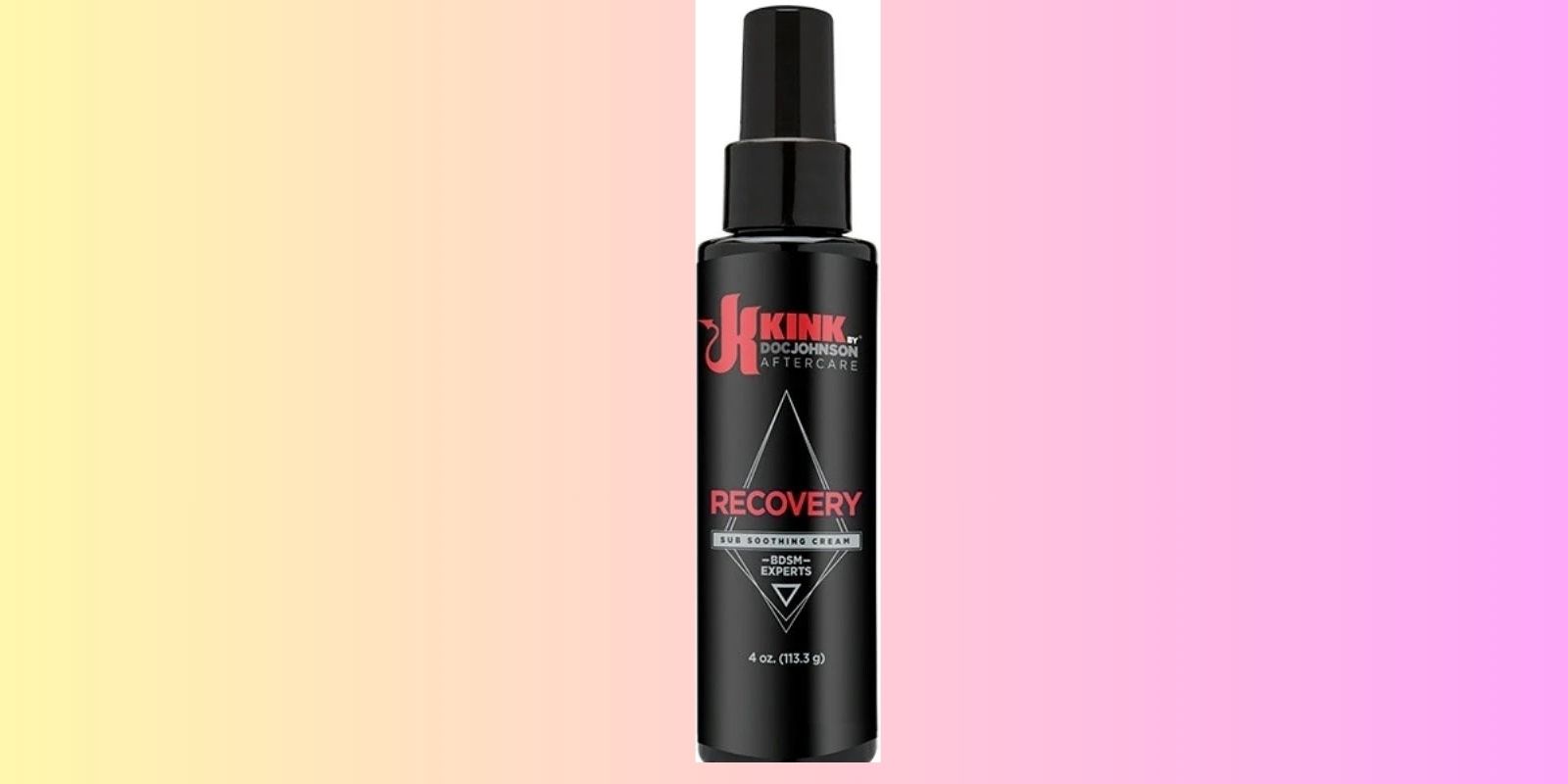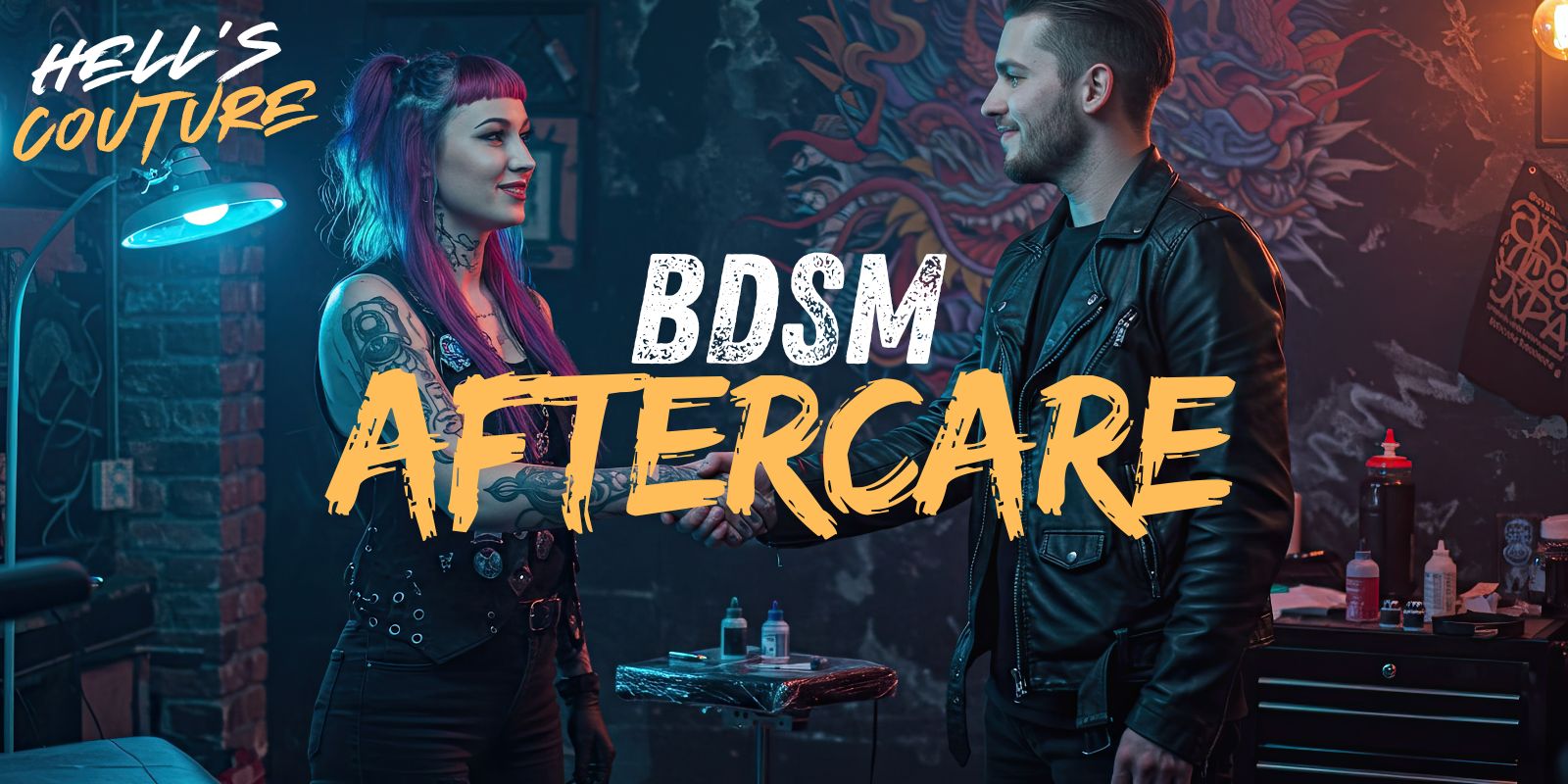BDSM Aftercare: How to Nurture, Recover, and Strengthen Connection
BDSM Aftercare is the essential recovery period following a scene, where partners tend to one another’s physical and emotional needs. Far from being optional, aftercare helps restore balance, prevent sub-drop, and deepen intimacy. This guide covers the science behind aftercare, standard practices, safety essentials, and how both dominants and submissives benefit from it.
Table of Contents – BDSM Aftercare
- What is BDSM Aftercare?
- Hormones Linked to Aftercare
- Best Practices in Aftercare
- Aftercare for the Dominant
- Role of Babysitters
- Understanding Sub-Drop & Dom-Drop
- Tips to Avoid Sub-Drop
- Recommended Aftercare Product
- FAQs on BDSM Aftercare
- Aftercare as the Bridge to Intimacy
BDSM aftercare is the intentional physical and emotional support provided to partners after a BDSM scene or intense sexual activity. More than simple comfort, it is a structured process of recovery that helps participants safely transition out of heightened states of arousal, pain, or power exchange. Aftercare may involve hydration, warmth, cuddling, or reassurance, and is essential for preventing sub-drop, restoring balance, and strengthening intimacy between partners.

What is BDSM Aftercare?
Aftercare is the period following a BDSM scene where partners provide support, comfort, and recovery. It can involve physical reassurance, hydration, warmth, and verbal affirmation. Importantly, aftercare is not sexual—it’s about grounding participants and helping them return to their normal emotional state.
BDSM aftercare is the intentional practice of caring for partners after a scene ends, ensuring both physical and emotional recovery. Because BDSM play can involve intense sensations, psychological shifts, and vulnerability, aftercare helps participants feel safe and supported as they transition out of “scene space.” It may include cuddling, blankets, soothing words, snacks, or water, depending on individual needs. For some, it’s about reassurance and connection; for others, it’s about stabilizing body and mind. Far from being optional, aftercare is a core part of healthy, consensual BDSM practice.
Why it matters
Scenes can be physically and emotionally intense, and participants may need time to unwind. Dominants as well as submissives can experience emotional drops, making mutual care essential. According to BDSM research, neglecting aftercare can heighten risk of anxiety, disconnection, or even trauma.
Hormones Linked to Aftercare
Scenes trigger shifts in brain chemistry: endorphins and dopamine fuel highs during play, followed by prolactin release which can lead to mood swings, depression, or fatigue. This biochemical drop—known as sub-drop or dom-drop—explains why aftercare is vital to emotional stability. Nurturing touch, food, and connection help balance these hormonal effects.
During BDSM play, the body undergoes intense hormonal changes. Endorphins and dopamine create feelings of euphoria, pleasure, and bonding, while adrenaline heightens arousal and focus. Once the scene ends, these levels drop, and hormones like prolactin rise, which can cause fatigue, mood swings, or emotional lows—often referred to as “sub-drop” or “dom-drop.” Aftercare helps stabilize these biochemical shifts by offering grounding practices such as gentle touch, verbal reassurance, hydration, or comfort food. By addressing both body and mind, aftercare ensures a smoother return to balance after the intensity of play.
Best Practices in Aftercare
Best practices in aftercare start with communication—partners should discuss their needs before the scene, whether they want touch, silence, food, or space afterward. Physical comfort like blankets, cuddling, or a warm drink helps the body relax, while emotional care such as reassurance or gentle conversation supports psychological recovery. Some players prefer practical check-ins over intimacy, while others need extended closeness. Because aftercare is highly individual, flexibility and attentiveness are key. Checking in hours or even days later can also be part of good aftercare, ensuring that both partners feel safe, respected, and reconnected. Each person’s aftercare needs differ, so negotiating expectations beforehand is crucial. Standard practices include:
- Cuddling or simply sitting together in silence
- Providing water or light snacks to aid recovery
- Wrapping a partner in blankets to maintain warmth
- Removing restraints and accessories slowly and gently
- Offering positive verbal reinforcement and soothing touch
For beginners, exploring BDSM starter guides helps normalize aftercare as part of safe, responsible play.
Treatment of Injuries
Minor wounds, bruises, or skin irritation should be disinfected and dressed. Gags, clamps, or blindfolds should be removed gradually, with sensitivity to lighting and comfort. All equipment—such as bondage kits or leather restraints—must be cleaned and stored properly.
Aftercare for the Dominant
Dominants can also experience drops. Known as dom-drop, this state can bring fatigue, sadness, or guilt after a scene. While the dominant remains responsible for the submissive’s well-being, partners should acknowledge that tops may also need reassurance, hydration, or gentle grounding.
Aftercare is just as important for dominants as it is for submissives. The intensity of control, responsibility, and emotional investment can lead to “dom-drop,” where the top may feel drained, sad, or even guilty once the scene ends. While dominants are often focused on supporting their partners, they too benefit from comfort—whether through hydration, snacks, a soothing environment, or affirmations that reassure them of their partner’s trust and enjoyment. Recognizing that both roles need recovery normalizes the idea that aftercare is mutual, reinforcing balance, connection, and well-being for everyone involved.
Role of Babysitters
In rare cases, if a dominant cannot provide sufficient aftercare, a trusted third party (a “babysitter”) can step in. This should always be mutually agreed upon. Even then, it’s recommended that the dominant remain present for at least 15 minutes post-scene to prevent feelings of abandonment.
Sometimes, a dominant may be unable to give full aftercare—due to emotional limits, physical fatigue, or needing their own recovery. In these cases, partners may agree to involve a trusted third person, often called a “babysitter,” who steps in to offer comfort, monitoring, or reassurance to the submissive. This arrangement must be negotiated in advance, with clear consent from everyone involved. Even when a babysitter is present, it’s important for the dominant to remain for at least the first 10–15 minutes after the scene to provide closure and avoid feelings of neglect or abandonment.
Understanding Sub-Drop & Dom-Drop
Sub-drop is the most recognized form of drop—characterized by depression-like symptoms such as fatigue, irritability, sadness, or nausea. Symptoms may appear immediately or up to 72 hours later. Dom-drop is less common but equally valid, often resulting from the sudden loss of emotional intensity after a scene.
Sub-drop and dom-drop are emotional and physiological lows that can occur after BDSM play. Sub-drop, the more commonly discussed, often feels like a crash following the intense release of endorphins and adrenaline—bringing on symptoms like exhaustion, sadness, irritability, or even nausea, sometimes delayed by hours or days. Dom-drop, while less talked about, is just as real and arises when the dominant experiences a sudden loss of emotional focus or struggles with feelings of guilt, doubt, or emptiness after a scene. Recognizing both forms of drop helps partners prepare with aftercare strategies that validate and support each other’s recovery.
Common symptoms of sub-drop
- Fatigue, headaches, or nausea
- Depression-like sadness or anxiety
- Restlessness, irritability, or disconnection
- Loss of appetite or comfort-seeking overeating
Tips to Avoid Sub-Drop
Preventing sub-drop begins with preparation and communication. Eat a balanced meal and stay hydrated before play, since physical stress can worsen emotional crashes. Agree on clear limits and safe words so the submissive feels secure during the scene, reducing the likelihood of post-play anxiety. Build aftercare into the experience—blankets, water, affirmations, and gentle touch all help stabilize mood and body chemistry. Checking in the next day with a message or call provides ongoing reassurance and prevents delayed feelings of isolation. By treating aftercare as part of the scene rather than an afterthought, partners can greatly reduce the risk of sub-drop.
- Eat and hydrate: Light meals and water before play help maintain energy and reduce crashes.
- Chocolate: Boosts oxytocin-like effects and enhances bonding.
- Physical closeness: Gentle touch, cuddling, or simply being present helps stabilize emotions.
- Productive tasks: Simple chores or activities provide grounding and a sense of accomplishment post-play.
For more ideas, see ways BDSM builds intimacy and enhances long-term pleasure.
Recommended Aftercare Product
Kink Aftercare Recovery Spray

This aftercare recovery spray is designed to gently cleanse the skin post-play, easing irritation and helping participants feel refreshed. A simple tool to support physical comfort during the aftercare process.
FAQs on BDSM Aftercare
Is BDSM aftercare always necessary?
Yes. Even if the scene is light, aftercare ensures physical safety and emotional reconnection.
Can dominants also experience sub-drop?
Yes. Known as dom-drop, dominants can feel drained or emotionally low after intense sessions.
What does aftercare usually include?
Cuddling, hydration, blankets, verbal reassurance, and treatment of minor injuries are common.
How long should aftercare last?
It varies. Some partners need minutes, others need hours, or follow-up care over several days.
What happens if aftercare is neglected?
Neglecting aftercare can cause feelings of abandonment, worsen drop symptoms, and harm trust between partners.
Aftercare as the Bridge to Intimacy
BDSM aftercare is more than recovery—it’s a practice of respect, nurturing, and emotional presence. By prioritizing care, partners transform intense play into deeper intimacy. Whether through a blanket, a kind word, or a quiet moment of connection, aftercare ensures that BDSM is not just safe, but profoundly human.




You must be logged in to post a comment.